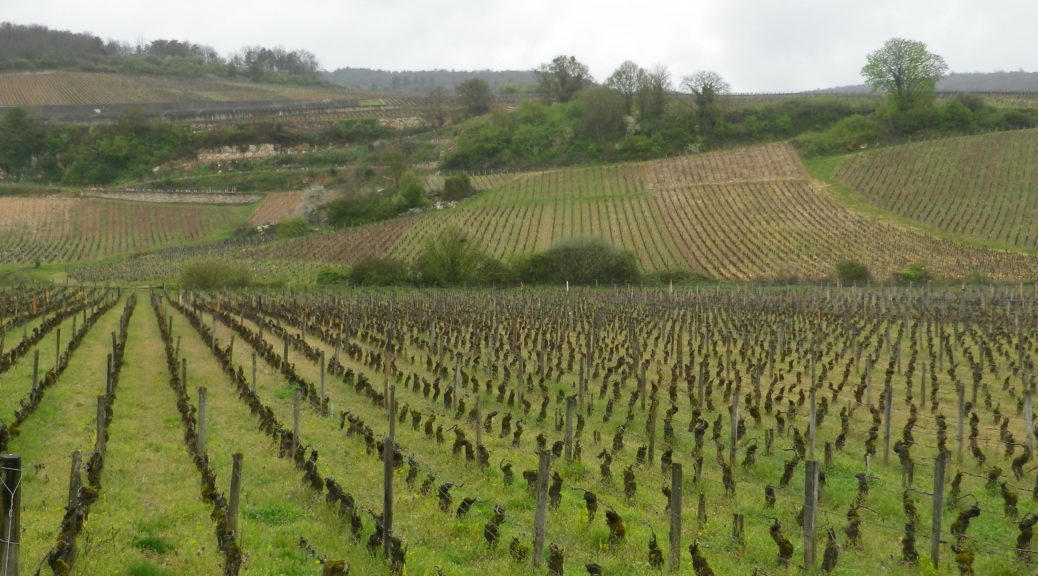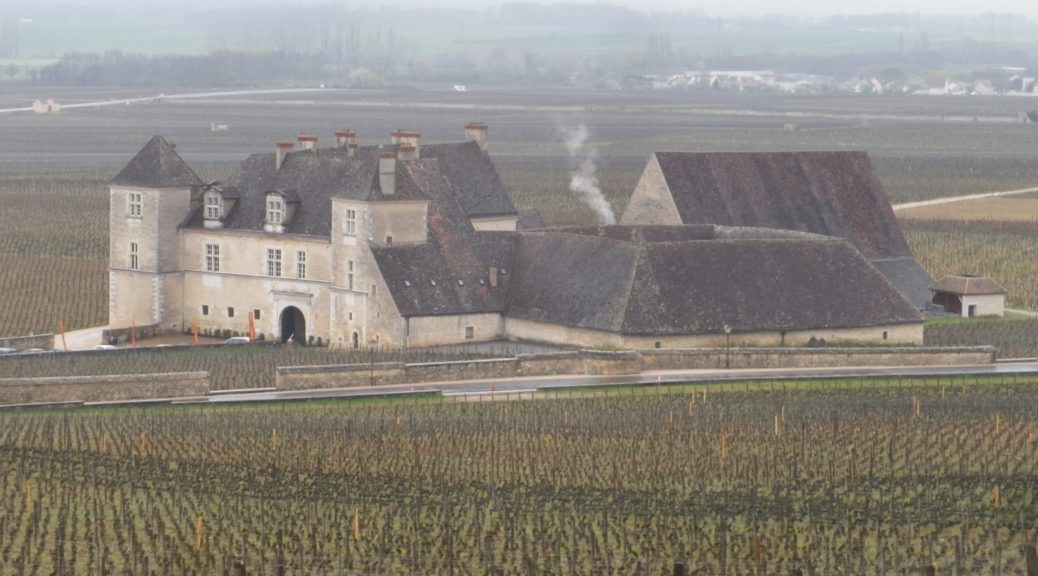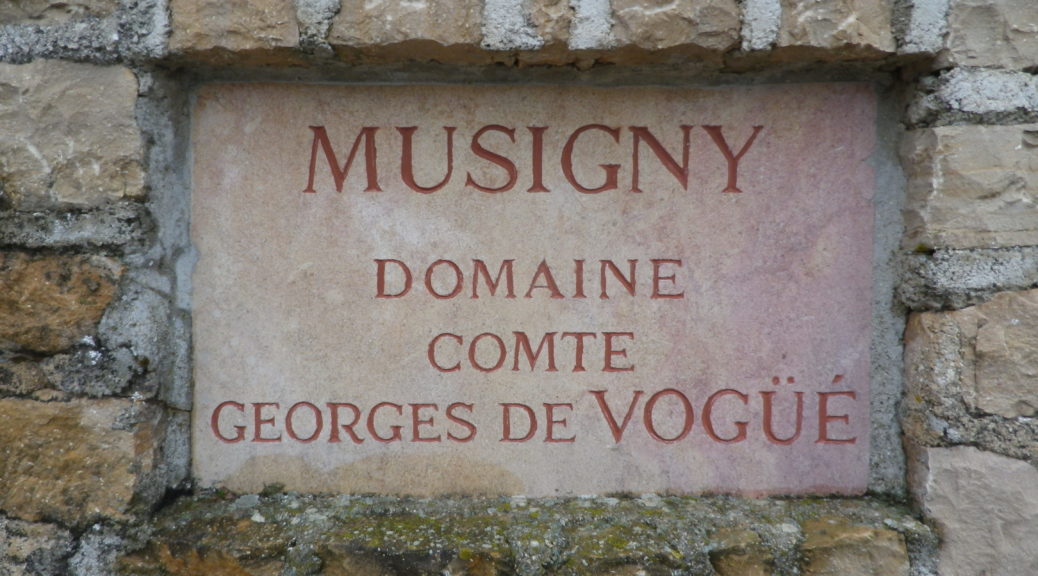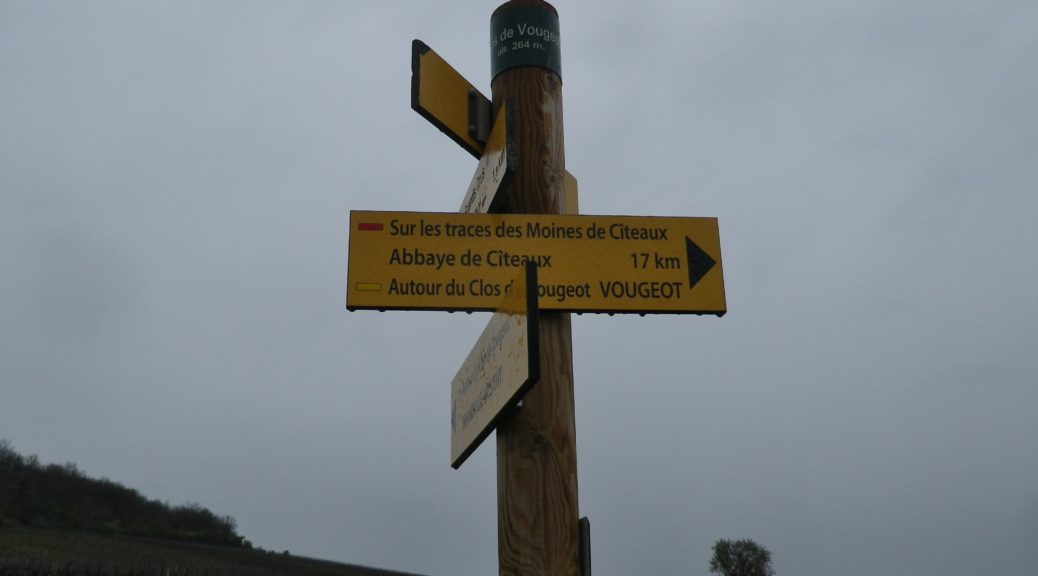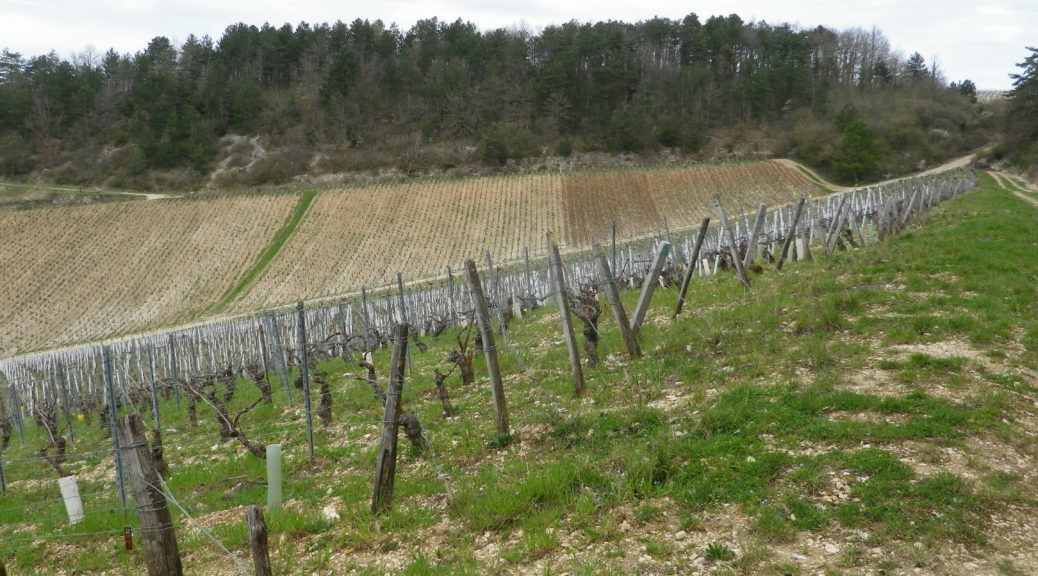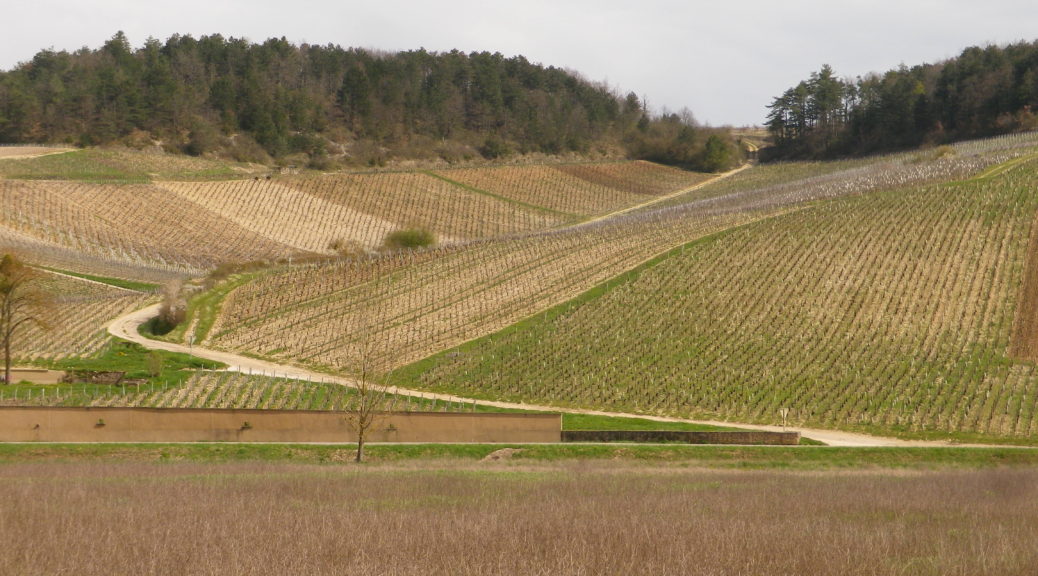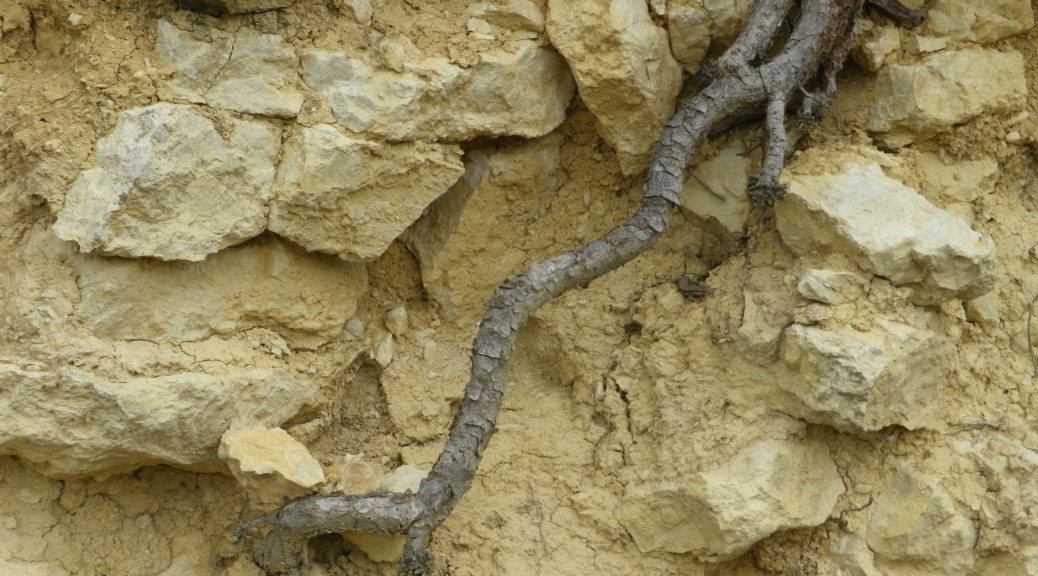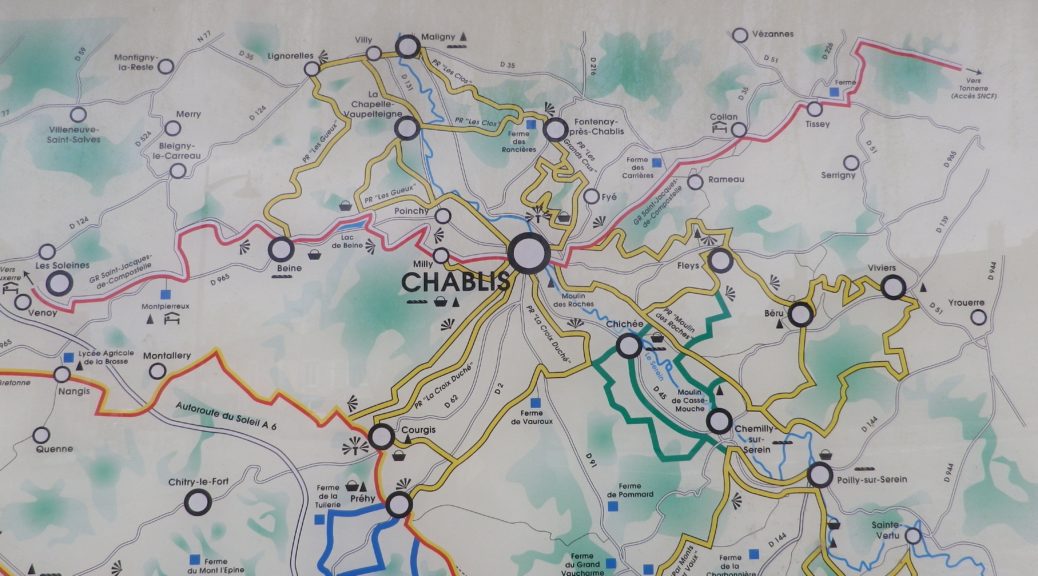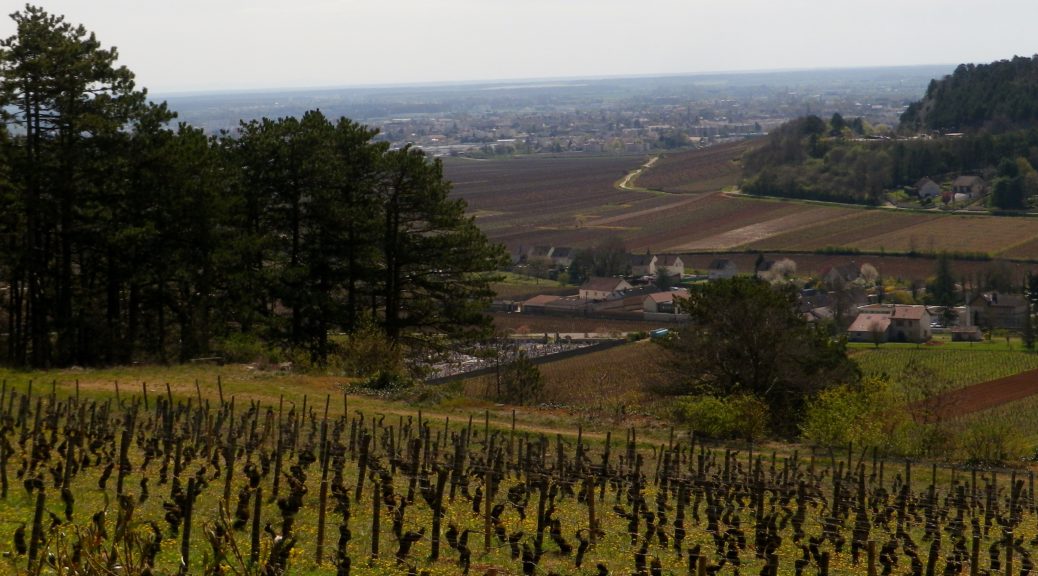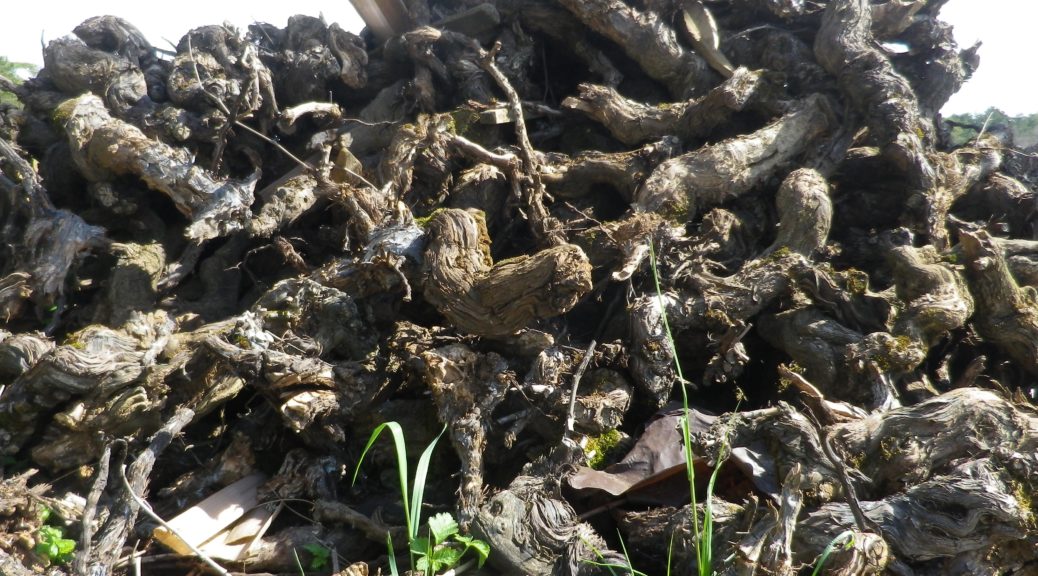Tag Archives: Burgundy,
Vougeot Vineyards
The vines were still bare, but spring was on the way. Those famous April showers were watering the early spring flowers, the only splashes of color on that wet spring day. Nevertheless, rain or shine, the word “Vougeot” conjures up so much of the magic of Burgundy and its wines, that I had to complete the eponymous hike: Autour du Clos de Vougeot.
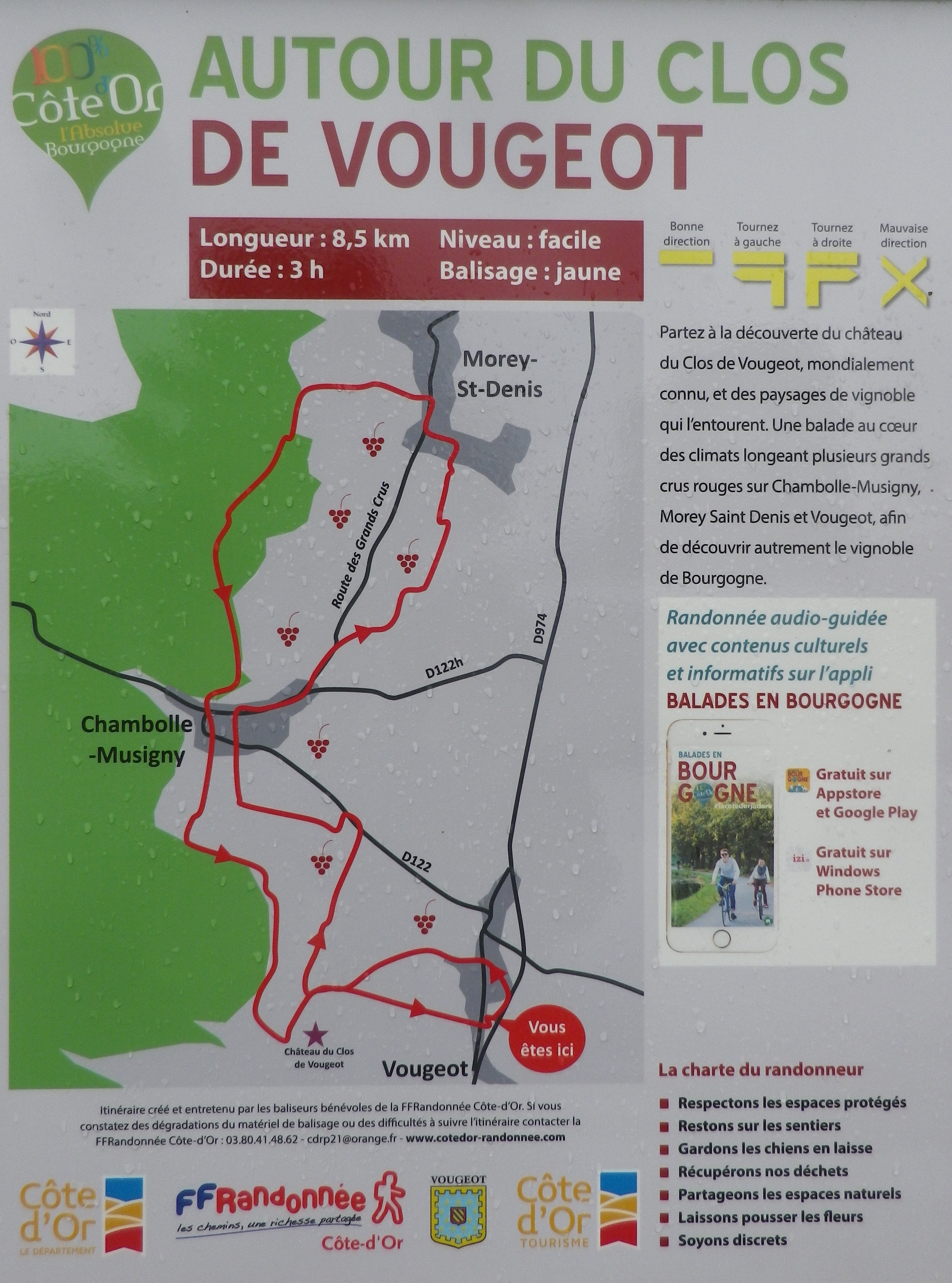
Wine Notes: Middle Cote de Nuits
What I Learned:
The Cote de Nuits refers to the northern half of Burgundy’s famous Cote D’Or (Golden Slope). (Whereas the southern half is known as the Cote de Beaune.) The northern, Cote de Nuits, section runs from south of Dijon to just south of Corgoloin in Burgundy.
There are eight villages/towns that fall within the Cote de Nuits growing area. The Grands Crus, the most prestigious vineyards, are well known because the most renowned have their names attached to the village they lie in. The village of Chambolle cites one of its most prestigious vineyards, Musigny, in its name – hence the village has become known as Chambolle-Musigny. Another nearby village-vineyard combination includes Morey-Saint Denis. But perhaps the most famous village, Vougeot, has no such hyphenated name. Its Grand-Cru is called Clos de Vougeot, in reference to the famous monastery vineyard. The wines from these Grands Crus are usually highly esteemed.
Autour du Clos de Vougeot: Trail in a Nutshell
Trail Name: Autour du Clos Vougeot
Trail Type: An easy, short circuit trail, mostly hard packed or tarmac surfaces, fairly well maintained, with some signage along the route.
Length:
Total – 8.5 kilometers/ 5.25 miles
Convenient to: Dijon or Beaune, France
Marking: Yellow rectangles/bars, and the occasional named trail sign. See also the featured photo of trail signage above.
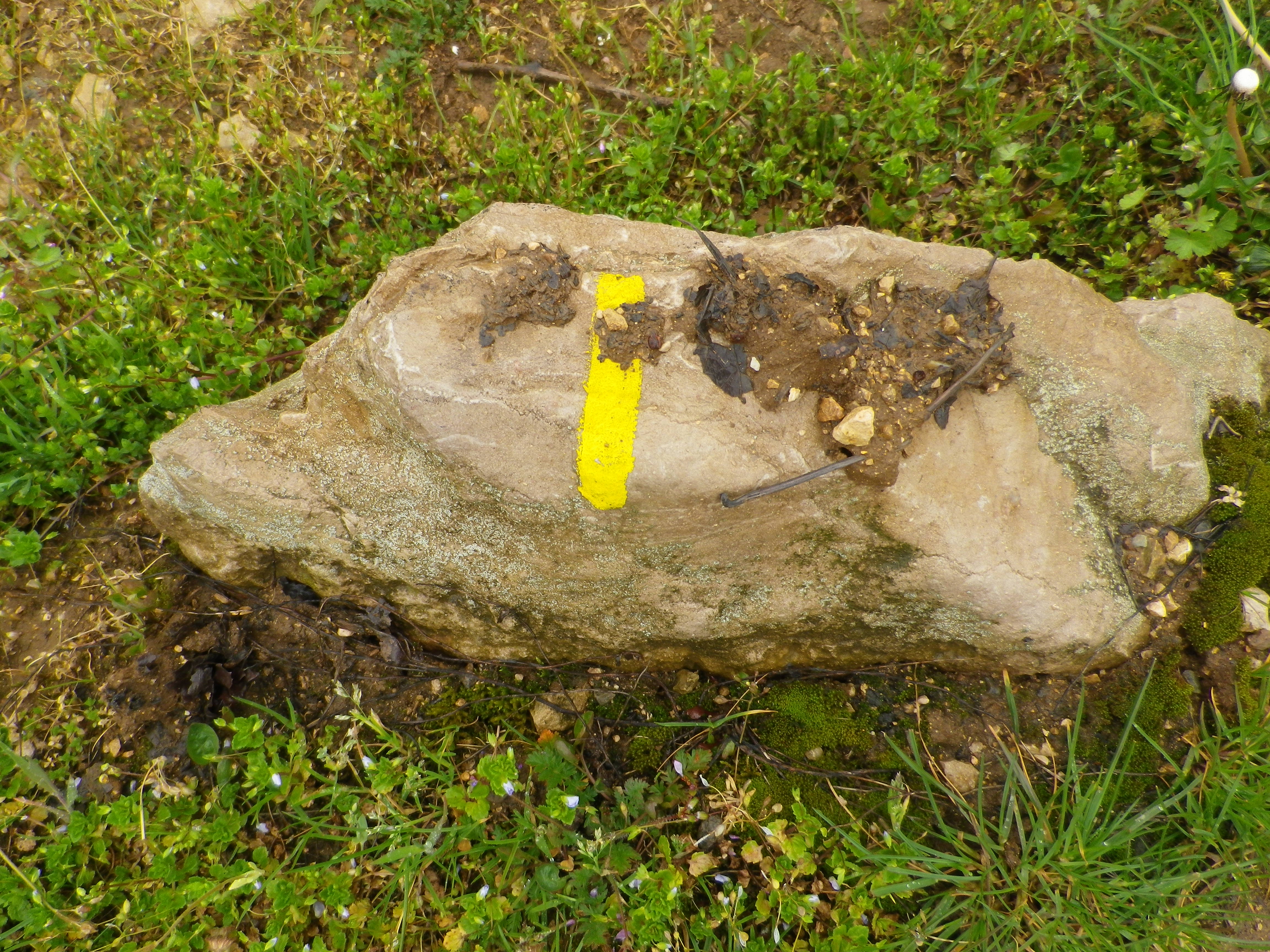
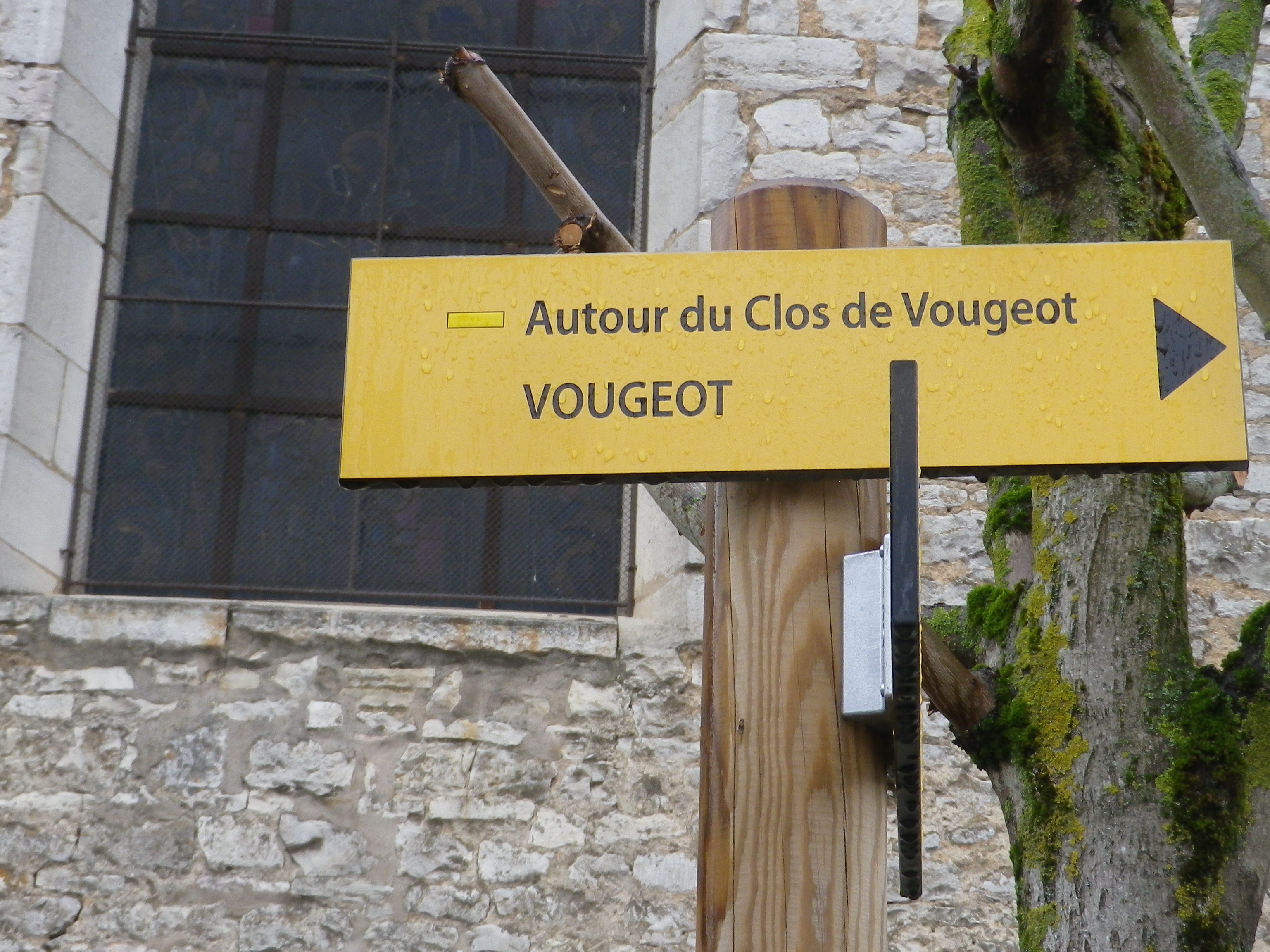
Continue reading Autour du Clos de Vougeot: Trail in a Nutshell
Gallery March 2021
Chablis’ Grand Hike
Chablis is a small town in the northwest corner of Burgundy, France. It is also an appellation. The appellation produces of some of the most delicious, mouth-watering, Chardonnay in the world. The town itself is surrounded by all of the seven grands crus in the appellation, and these were what I had come to see, and taste, of course.
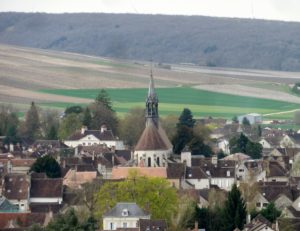
The Sept (Seven) Grands Crus trail delivered on its promise: I went through or along, or within sight of all seven. Less a hike, and more of a stroll, even the most hedonistic wine-taster, or gourmand who has spent decades indulging exclusively in the rich, buttery cuisine of this area, could complete this short trail. While not for everyone, (most people would be content simply to taste the wines on offer from multiple winemakers within the town), this trail will certainly interest Chablis wine-enthusiasts who have come to appreciate the land, the terroir, from which this nectar derives. I found it fascinating to see the lay of the land, the expositions, and the world-famous stone.
Wine Notes: Chablis
What I Learned
The Chablis wine sub-region is in Burgundy, a land of incredible wines. Further north and west than the rest of Burgundy, it is a cooler, wind-swept area, once covered for millennia by a vast sea. The local soil, soil known as Kimmeridgian, is a combination of clay and limestone. The limestone’s most notable aspect is the presence of fossilized seashells within it. As a result, the stones here have a unique note of salty chalk, giving the wine a crisp, clean, fresh mineral flavor notes not often found in Chardonnay from elsewhere.
Chablis – 7 Grands Crus: Trail in a Nutshell
Trail Name: Chablis – Les Sept Grands Crus/ Chablis – Les 7 Grands Crus (See comments below.)
Trail Type: Short distance circuit; trail surfaces mostly well-maintained and almost exclusively paved or hard-packed; marking on the trail was difficult to discern. (See comments below.)
Length:
Total – 6.1 kilometers/ 3.8 miles
Convenient to: Auxerre, France
Marking: Unknown (See comments below.)
Continue reading Chablis – 7 Grands Crus: Trail in a Nutshell
Savoring Savigny
Like any fine Burgundian wine, Savigny should be savored. Not just the wine either: the sights and sounds of its sites merit time and attention as well.
Savigny-les-Beaune, as its full name indicates, is located near Beaune, the main hub of the Cote de Beaune wine district. Like Beaune, this small town has its own appellation, covering both red (Pinot Noir) and white (Chardonnay) wines. It is in a beautiful setting. The village essentially follows along a narrow river valley, backed by high hills, and surrounded by forests and vineyards. While most visitors search for the wine, I wanted to explore the town’s vineyards and forests, as well as savor the quaint corners of the historical center.
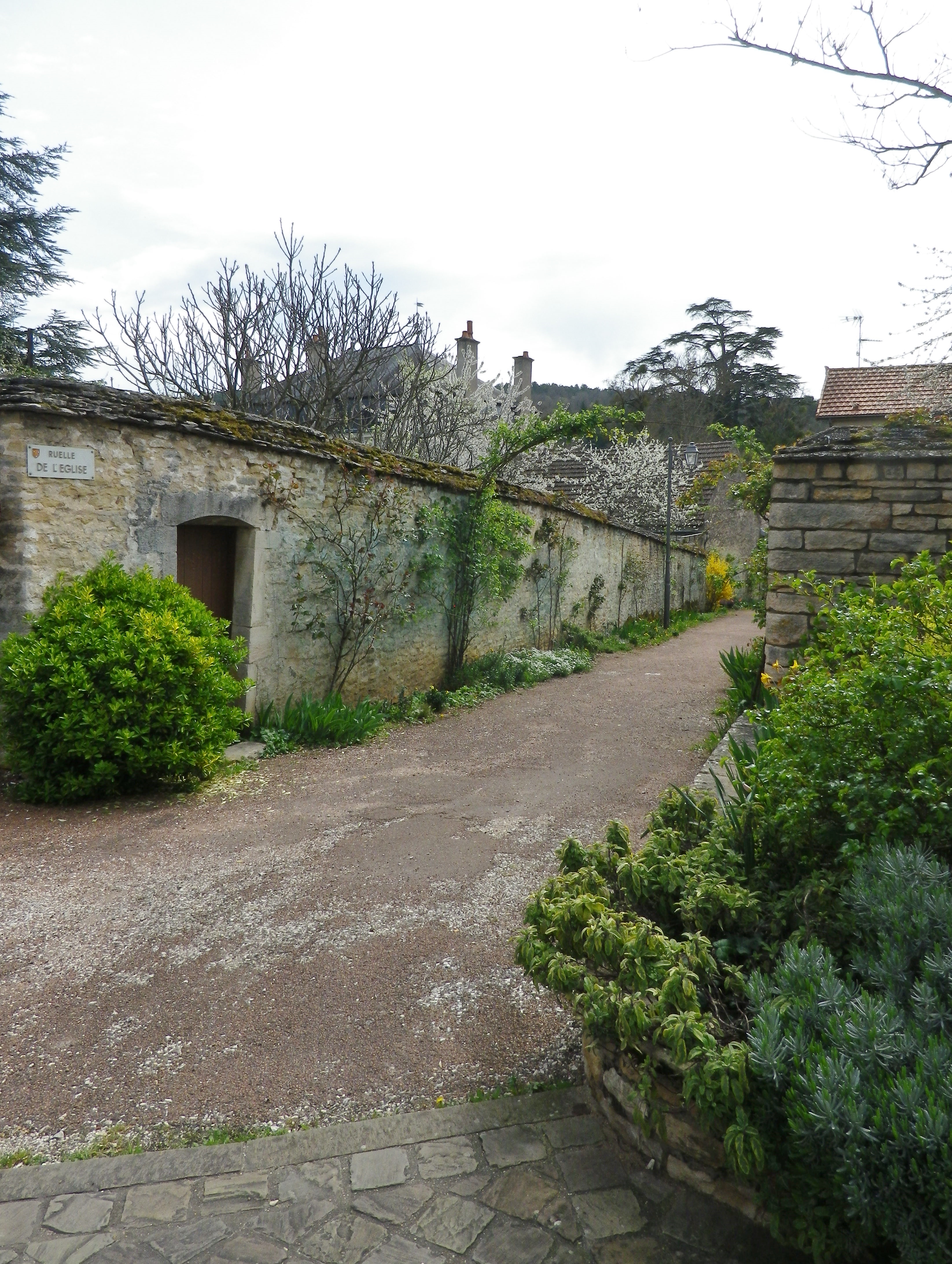
The first sensation to hit me, aside from the bucolic scenery, was the soft scent of pine. After passing through the outskirts of town, the trail passes through a wooded area made up of many pine trees. It was an aromatic climb uphill, as I breathed deeply of the forest scents. Pines do well in poorer soils, as do vines, which appeared as soon as I crested the hill.
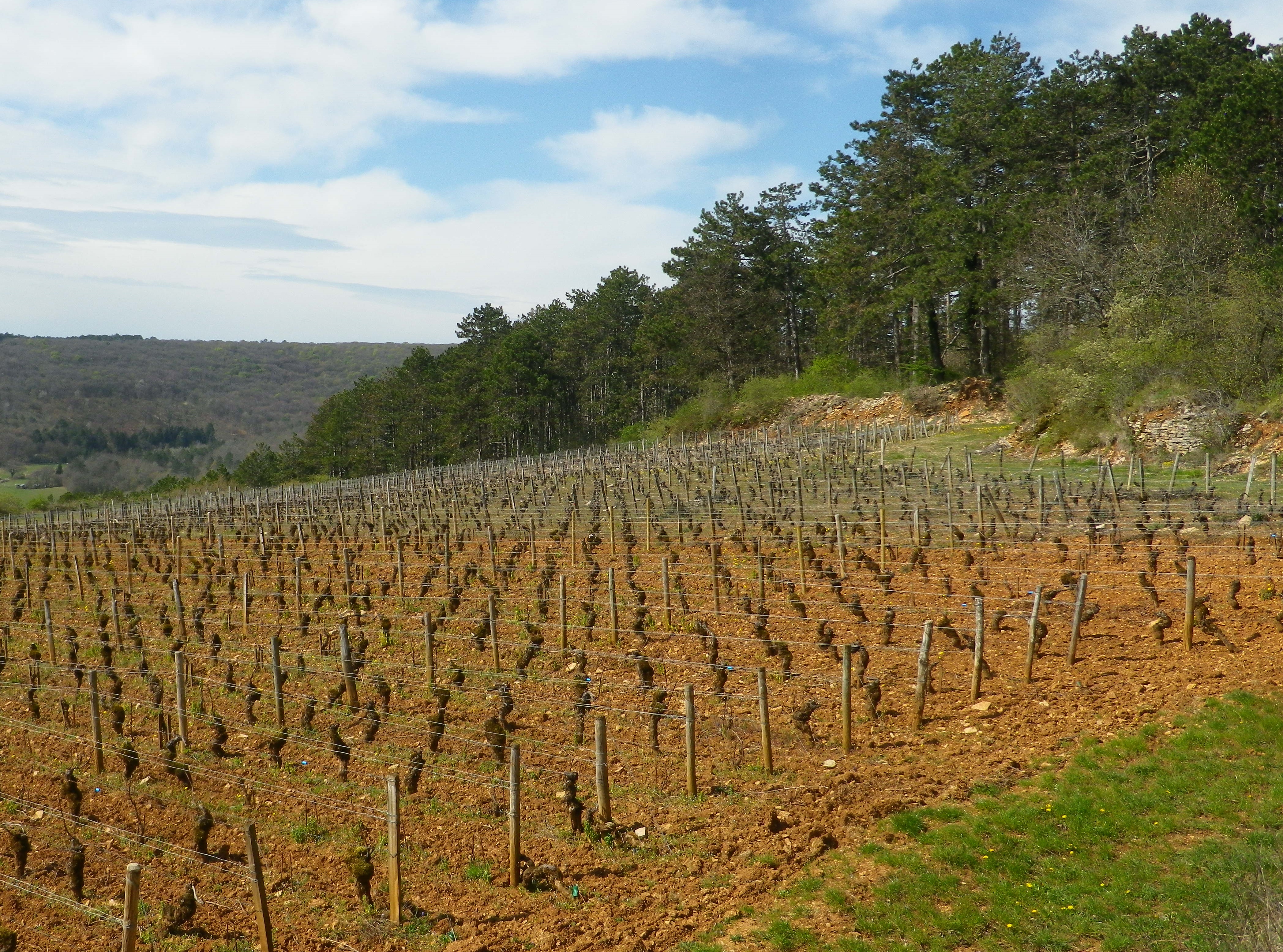
Chunks of limestone dotted the reddish soil surrounding the vines. Limestone is a prominent feature in the soil here. So much so that the rocks pulled from the soil are often piled together. Called “murgers,” these piles represent the backbreaking work of the vintners. Along much of this section of the trail, murgers would appear, the new serving as breaks between vines, and the old slyly hiding under a thick growth of vegetation in thickets and copses.
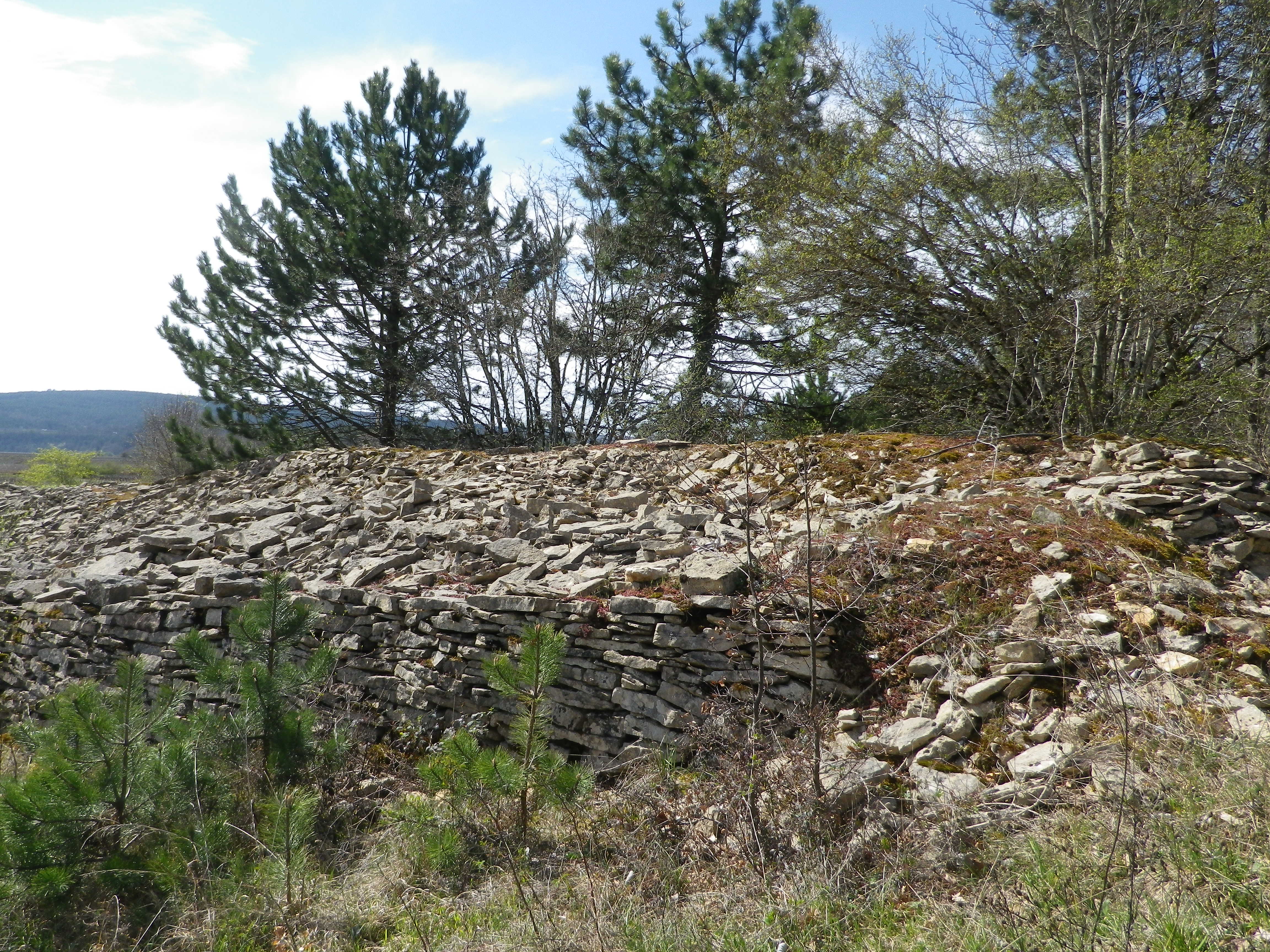
Following the passage through vineyards, a long descent through woodland ensued. The trail was rougher, but evidently well used. The shady interlude was greatly appreciated. It terminated in a “combe” a narrow valley not defined by a river. There are many combes in Burgundy, and they are well marked on maps.
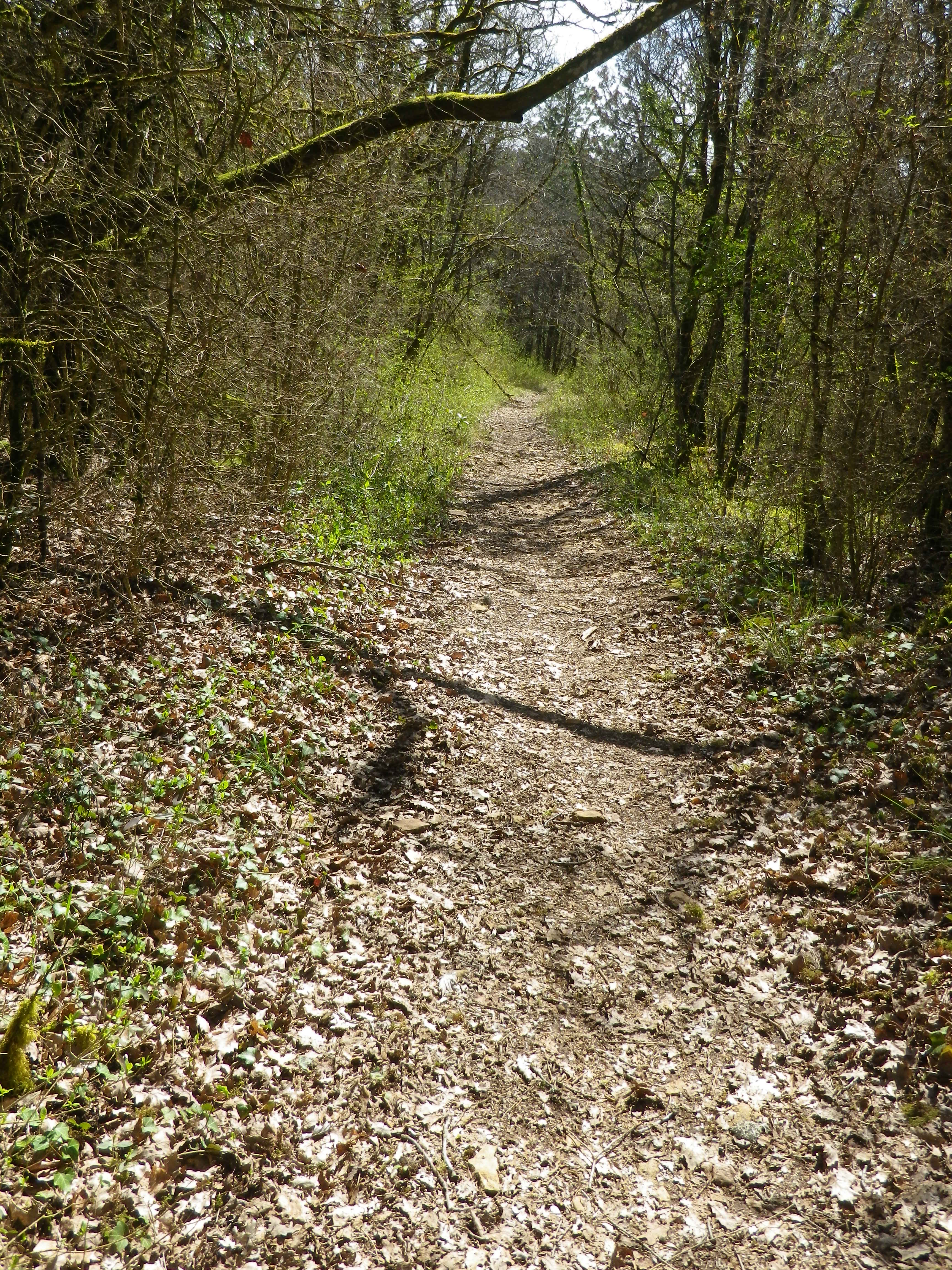
Upon leaving the combe, the trail headed uphill through more vineyards. In fact, from the top of the climb, the amazing sight of acres and acres of vineyards spread out below me, south and east, all the way to Beaune. (See the feature photo at the top.) The Cotes de Beaune is no less impressive than the Cotes de Nuits when it comes to the sheer numbers of vines planted on the famous slopes of the Cote d’Or. The trail headed downhill. It twisted and turned as it threaded its way through the woods, carefully inscribed between moss-covered limestone walls. Treasures as yet unseen lay behind these walls.
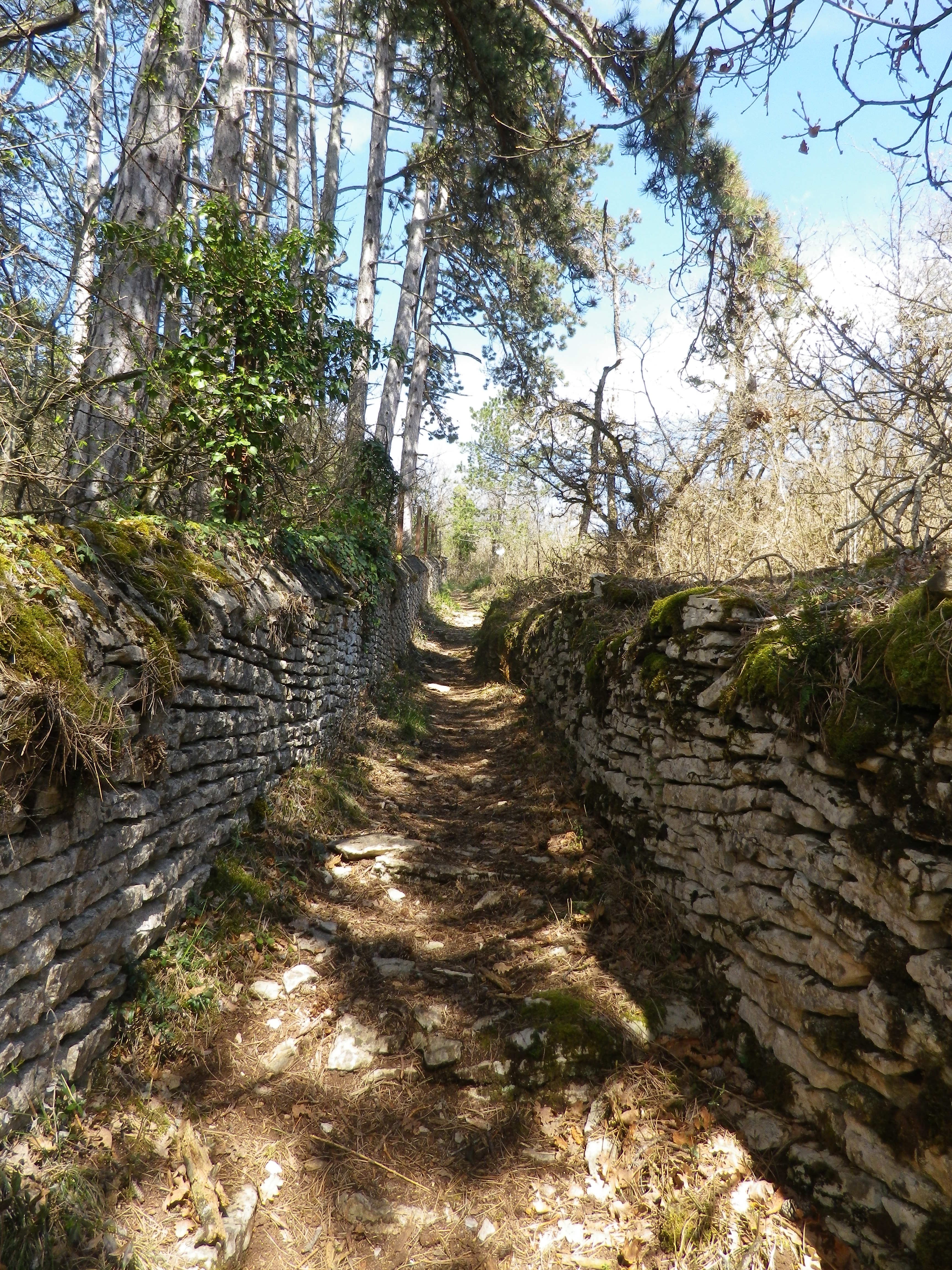
What lies behind the walls is evident only upon reaching the wide agricultural road at mid-slope. I turned around to discover that on this partially wooded slope lies the vast majority of the town’s Premier Cru: Aux Serpentieres, Petits Godeaux, Aux Gravains. Further down the slope, I could see many lieux-dit, named parcels, like the Aux Grands Liards parcel. The grapes here made up the village appellation wines. Someone thoughtfully stationed a picnic table overlooking the town’s glorious vineyards. But I pressed on…
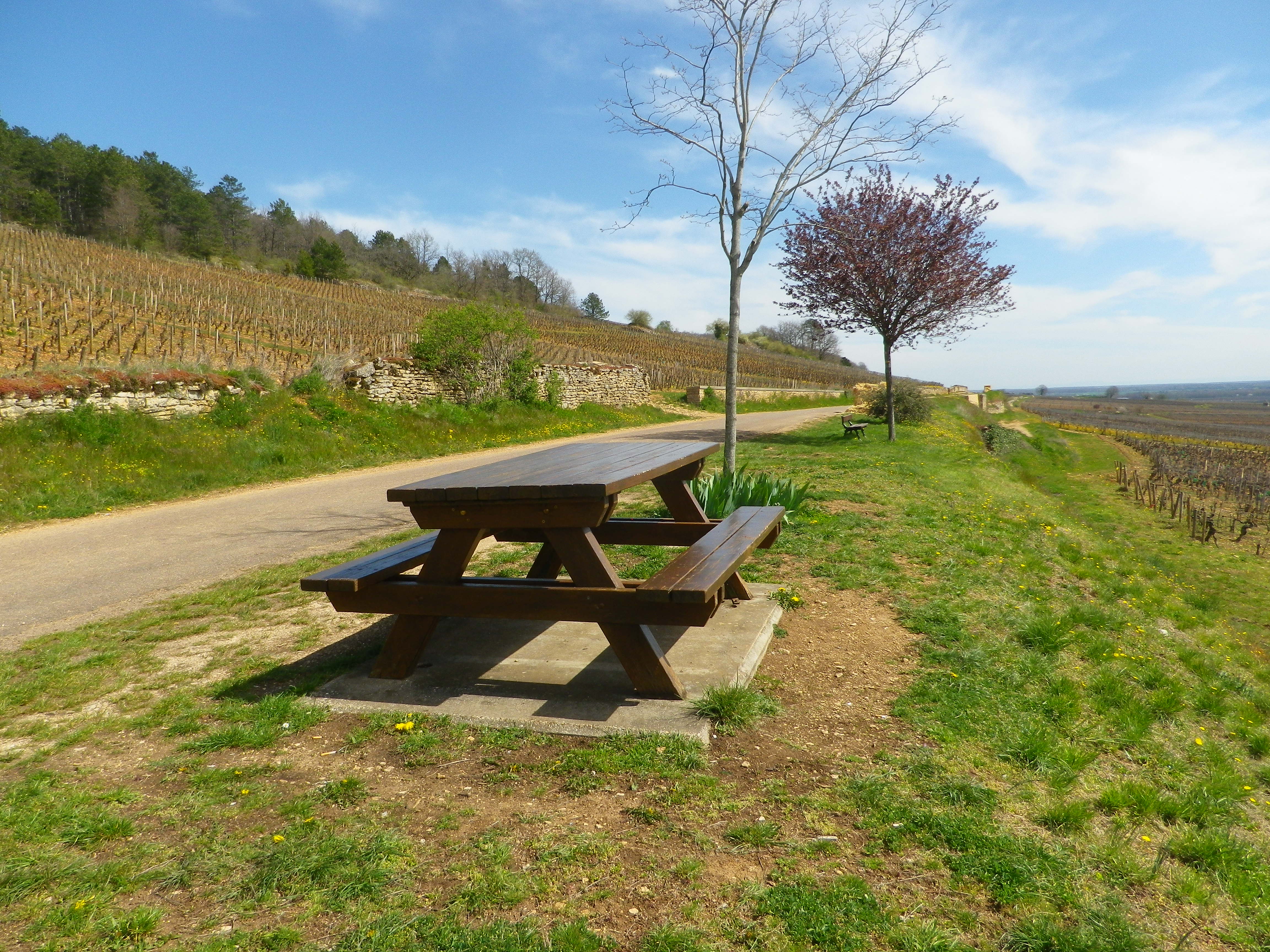
Soon after that, I came back into town. Homes and caves all constructed in limestone line the narrow lanes, ghostly white and just as quiet in the afternoon sun. The sound of a small river announced the Rhoin. An old washhouse, lined the northern bank. Every town in Burgundy seems to have one, and this one is was located just outside the castle gates.
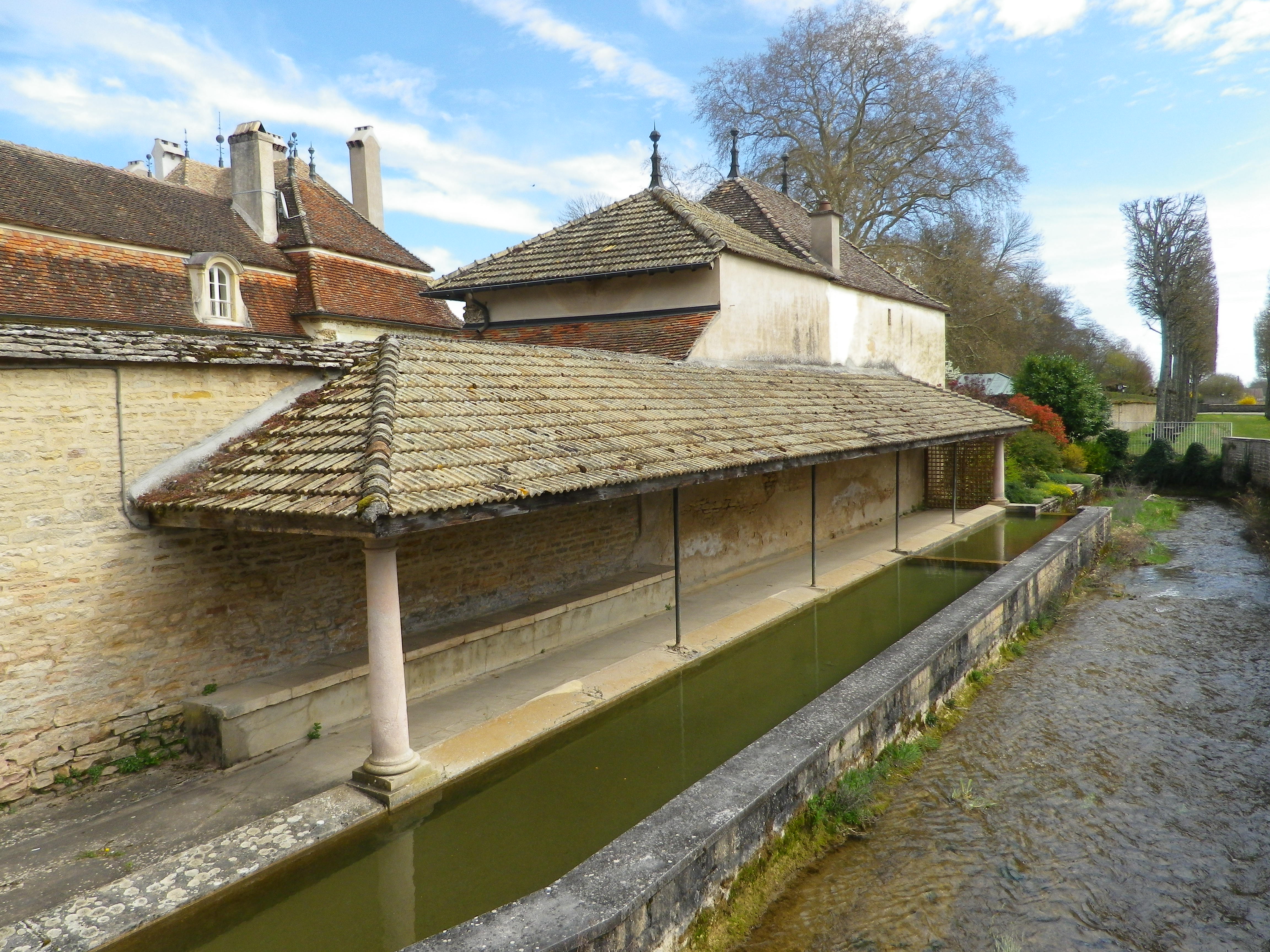
The Chateau de Savigny is many things. A winery, an historical site, a museum site with eclectic collections, including, but not limited to, displays on wine-making, motorcycles, old cars, and old fighter jets. Some of the last are visible from the trail, as it circles around the south side of town, back to the official start. Not something ordinarily seen on a vineyard trail! This final leg comes with another ascent, more vineyards, a delightful section of forest, and descent followed by a short meander along the Rhoin, providing a musical interlude.
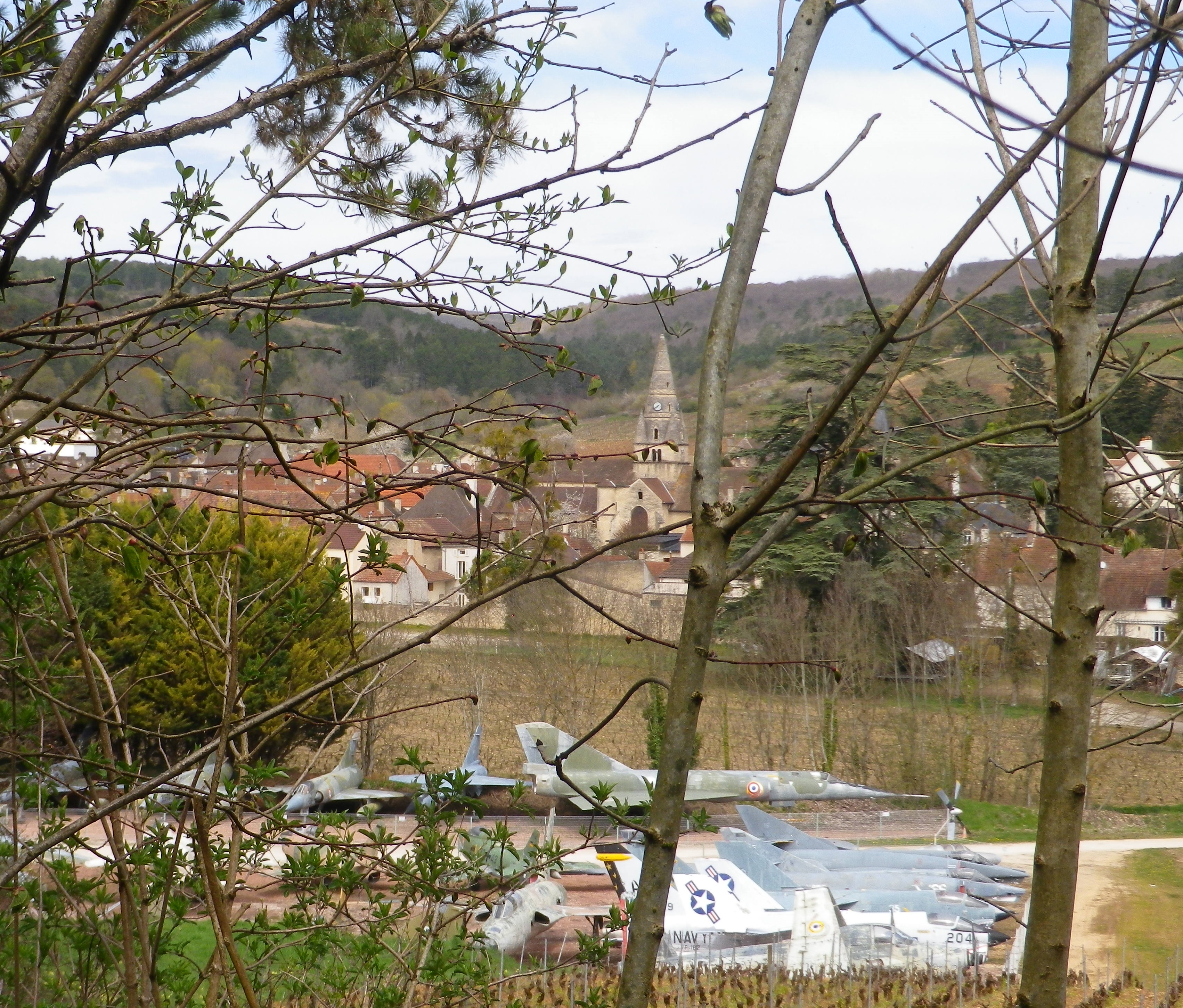
Many people use Beaune as a staging point for visits to the nearby wine villages. But however good her wineries may be, Savigny, like so many other villages of the Cote de Beaune, must be savored with more than just a cursory tour of its wineries.
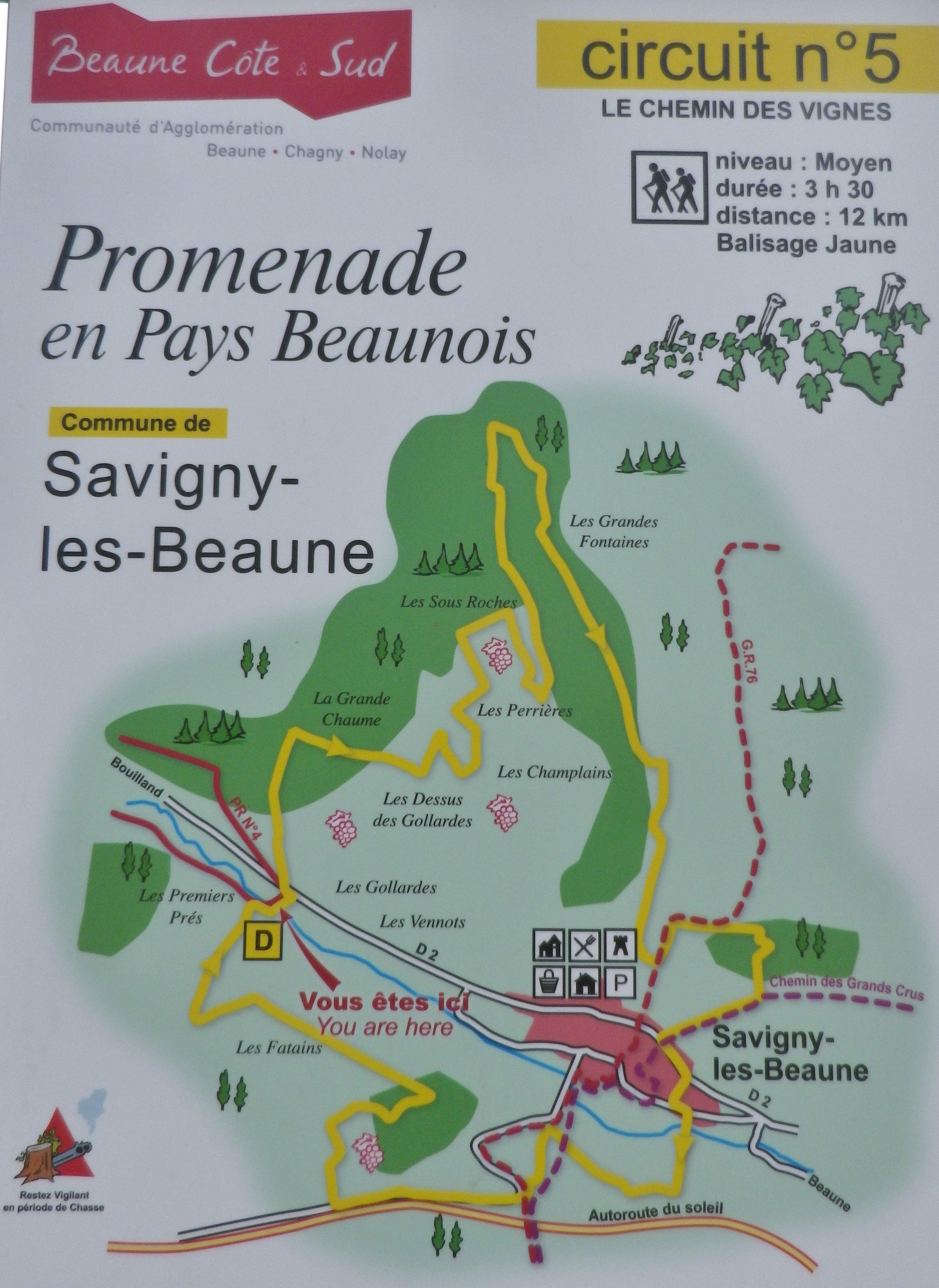
Wine Notes: Cotes de Beaune Savigny
What I Learned
The Burgundian wine region known as the Cote d’Or has a northern section and a southern section. Cote de Beaune is the name of the southern section. This part of the Cote d’Or famously produces some of the most esteemed white wines in the world, in addition to some very good red wines, which is the reverse of the northern section known as the Cotes de Nuits.
The Cote de Beaune is generally speaking more famous for its white wines, such as those from the crus in Meursault, or Puligny-Montrachet or Chassagne-Montrachet. However, Savigny-les-Beaune is known primarily for its red wines. Like Pommard, a bit further south in the same district, and also well-known for its reds, Savigny lies at the mouth of a transversal valley. This type of valley, formed by the Rhoin River in Savigny, crosses a crestline, the Cote d’Or, at right angles. Hence in Savigny, this means a narrow, fairly protected valley with steep sides, with west- and south-facing vineyards, ideal for vines.
While there are no Grand Cru in Savigny, there are just over 20 Premier Cru, perhaps the most well-known being Aux Vergelesses, at the border of the neighboring town Pernand-Vergelesses. The village has its own Village Appellation, Savigny-les-Beaune Controlee, as well as its Premier Cru Appellations, for both red and white wines.
The Pinot Noir wines of Savigny-les-Beaune have good aging potential. (In fact, one bottle I had purchased then stored, I only got around to drinking 11 years later, and found it soft, and rich in flavors and mouthfeel.) In any event, the wines in Savigny are good, representative Pinot Noir and Chardonnay wines, with as good a price-to-quality ratio as a wine lover is likely to find anywhere along the Cote d’Or.
What I Tasted
2014 Pinot Noir, Aux Grands Liards, Appellation Savigny-les-Beaune Controlee, Domaine Giboulot (Savigny): A dry red wine with medium red brick color; a floral and peppery spice nose, with forward flavors of vanilla, oak and red cherry flavors; medium tannins.
2008 Pinot Noir, Savigny-les-Beaune, Appellation Savigny-les-Beaune Controlee, Domaine Andre Morey: A dry red wine with medium plus brick red color; a nose of spice and light tobacco; flavors of vanilla, slight fruit, and a hint of herbaceousness; medium tannins. (Consumed in 2019!)
2007 Pinot Noir, Savigny-les-Beaune, Appellation Savigny-les-Beaune Controlee, Domaine du Chateau de Meursault: A dry red wine with light medium ruby red color; slight red berry and spice nose, with flavors of the same; medium plus tannins.
2006 Pinot Noir, Aux Clous, Appellation Savigny-les Beaune Premier Cru Controlee, Pierre Andre: A dry red wine with medium plus ruby red color; spice, red berry and wood nose, with stewed red berries and spice flavors; high minus tannins.
